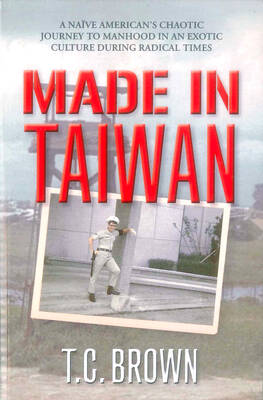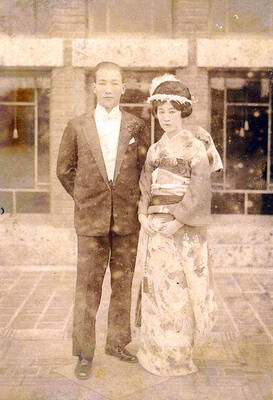For Britons fond of middle-aged men in short trousers belting out double entendres, there is joyful news. AC/DC flew in this week for five dates taking in London, Dublin, Manchester and the home of heavy metal itself, Birmingham.
For some, AC/DC are the ultimate heavy metal act, their 1980 album Back in Black a high watermark of the genre; there is even an exhibition in London at the moment charting their formative years. But for others, AC/DC aren’t a heavy metal act at all, they’re a classic rock band — and calling them heavy metal is an act of treachery. In the age of economic and environmental meltdown, it’s good to know some people still feel strongly about these things.
AC/DC may have remained impervious to trends over their 36 years together, but heavy metal itself now consists of so many offshoots and technical terms, it can feel as if there’s a grindcore gig going off inside your head. Grindcore? Well, that’s an extreme form of death metal. Death metal? Well, that’s the next step on from thrash. Thrash? Well — look, you get the picture.
For non-metallers who have never ridden the lightning or reigned in blood, the world of heavy metal can seem impenetrable. Clearly some kind of idiot’s guide is needed, if only to help people distinguish shredding and cymbal chokes.
BACH: THE FIRST HEADBANGER
Black Sabbath are often hailed as the first heavy metal act, although you will meet smart-asses who claim that Led Zeppelin’s Whole Lotta Love (1969), the Beatles’ Helter Skelter (1968) or Jimi Hendrix’s Purple Haze (1967) was the first heavy metal track. Skip them all and say: “Actually, much of the virtuoso playing is inspired by classical artists, which makes Bach the world’s first headbanger.” From then on, heavy metal just got louder. And faster. Then louder and faster still. This reached a peak with death metal, where rhythms could hit 350bpm before anyone in the band had time to say: “Why?”
HAIR IS EVERYTHING
Bloggers have plotted a link between Metallica’s hair lengths and the quality of their rock over the duration of their career. Clearly, hair is crucial. If it isn’t long, you may as well sound like James Blunt. Classic metal fashion sticks to boots, denim and a tattoo — of a skull, a weird beast, or even the skull of a weird beast. Other styles can involve piercings, corpsepaint (for that been-dead-a-year look) and looking like you’ve just escaped from Middle Earth.
AND FINALLY …
So there you have it. Next time you find yourself in a room full of hardened rockers with Pantera lyrics tattooed down their necks, simply raise your devil horns, growl a bit of grindcore and recite your favorite (and only) Judas Priest fact. And when they start grilling you on the finer points of Stormtroopers of Death’s back catalogue … just run away. Fast.
Glossary
• Headbanging: There are 17 types, according to Wikipedia, from the “circular swing” and “drunk style” to “the whiplash” and the “two-up-two-down.” Our advice? Just shake your head a bit. You’re bound to land on one of them.
• Shredding: Playing mind-bogglingly difficult guitar solos at a frankly ridiculous, breakneck speed (without needing surgery to sew your fingers back together).
• Blast beat technique: Used by extreme metal bands like Napalm Death, whereby kick drum, snare and cymbals are played at a frankly ridiculous, breakneck speed (you may sense a pattern emerging).
• Death growl: The ability to make your singing resemble a dozen water buffalo being tortured with blunt instruments. Not something to play to grandma. Or pretty much anyone.
• Cymbal choke: The art of grabbing one’s cymbal straight after whacking it, for added emphasis. Because you know how cymbals need added emphasis.
• Power chord: Simple chord that is based on one interval (normally the root and the fifth). It is easy to play hard, with lots of distortion, at a frankly ridiculous breakneck speed.
• Devil horns: Raising the index and little finger is the international symbol that you are Ready to Rock.
• Metalhead: Someone who doesn’t need this guide.
Bands to namecheck
• There are approximately 12,634,735 heavy metal bands. And that’s just in Liechtenstein. We haven’t got time to trawl through all their histories, so here are some key facts about the five most seminal heavy metal acts.
• Black Sabbath: Found live bats tasty. Enjoyed rocking out. Classic album: Paranoid.
• Iron Maiden: Have a mascot called Eddie, who is also fond of rocking out. Classic album: The Number of the Beast.
• Judas Priest: Lead singer Rob Halford was the first mainstream heavy metal star to come out. He was not the first to rock out, though. Classic album: British Steel.
• Metallica: Went to war with their own fans over file-sharing. But still found time to rock out. Classic album: Master of Puppets.
• Slayer: Have a fascination with the Nazis — and rocking out. Classic album: Reign in Blood.
Those tricky genres
• Metal has more offshoots than Freudian theory and Star Trek put together. These are the big ones …
• NWOBHM: Stands for New Wave of British Heavy Metal, which became popular at the start of the 1980s when bands like Iron Maiden, Saxon and Motorhead beefed up their sound in response to punk (which was making metal look a bit pants). NWOBHM is loud, aggressive and quite possibly the least catchy genre name in the history of music. What not to say: “I’m a big fan of Nwobbum, me.”
• Thrash metal: Anthrax, Megadeth and Slayer took NWOBHM’s template and made it harder, faster and nastier. The result was the very opposite of hair metal (see below). What not to say: “Do you lot not have something a bit more, you know, acoustic-y?”
• Death metal: Based on thrash, death makes good use of the blast beat and the death growl, along with lyrics about gore, mutilation, torture and more gore. What not to say: “I can’t really see that one about a zombie massacre cracking the top 20.”
• Black metal: For those who think death metal is a bit too heavy on the giggles. Extremely nihilistic and featuring an inexplicable number of bands from Norway, black metal is down with paganism, Satan and the wearing of corpsepaint. The fact that it was associated with murders and church burnings (in Norway) in the 1990s didn’t do much for its image. What not to say: “Lighten up, guys, it’s sunny outside.”
• Hardcore: Although sonically similar to thrash, hardcore is more political and based within the DIY punk community. Lots of cores have emerged in its wake, such as metalcore, deathcore, post-hardcore, grindcore, Nardcore, thrashcore, Christian hardcore. What not to say: “Any fans of applecore here?”
• Doom: You know how we said metal just got louder and faster over the decades? Pretend you never read that. Doom is an extremely slow, sludgy and dense kind of metal. It’s all about atmospherics, you see. That and dislodging vital organs. There are many types of doom: epic doom, funeral doom, drone doom, stoner doom, and doom de doom (OK, I made that one up). What not to say: “Doom — is that the computer game? I once got to level six!”
• Hair metal: Inspired by 1970s glam bands, hair metal acts like Motley Crue and W.A.S.P focused on big melodies, drinking their own weight in booze and looking like, to borrow a phrase from those days, a bit of a wally. What not to say: “Final Countdown by Europe? Metal doesn’t get much heavier than that.”
• Nu metal: Bands such as Limp Bizkit, Papa Roach and Linkin Park combined their metal with grunge, funk and what is known in musicologist circles as terrible, terrible rapping. What not to say: “Limp Bizkit’s Fred Durst really summed up the anxieties and fears of a lost generation. He was so much more than just a middle-aged man in long shorts grunting.”
• Prog metal: This adopts the bonkers time signatures, technical prowess and geeky lyrical references that made progressive rock so, well, progressive. Mastodon’s recent album, Crack the Skye, incorporates ukuleles, Stephen Hawking references and a four-section symphony about czarist Russia. What not to say: “Can you not just play this one in 4/4?”
• Comedy metal: Because a lot of metal is obviously quite ludicrous (grown men growling loudly about orcs, for instance), it has leaned itself to affectionate parody. Often — as in the case of the recent Anvil! movie — the lines between comedy and reality are pretty thin. See also Spinal Tap, Jack Black and the Darkness. Oh, the Darkness weren’t joking? Oops. What not to say: “Those Napalm Death guys are just so funny!”
• Other genres: Symphonic metal, sludge metal, stoner metal, drone metal, ambient metal, viking metal, power metal, groove metal, glam metal, gothic metal, alternative metal, aluminium, copper, zinc, tin, alloy, and carbon fiber.

By 1971, heroin and opium use among US troops fighting in Vietnam had reached epidemic proportions, with 42 percent of American servicemen saying they’d tried opioids at least once and around 20 percent claiming some level of addiction, according to the US Department of Defense. Though heroin use by US troops has been little discussed in the context of Taiwan, these and other drugs — produced in part by rogue Chinese Nationalist Party (KMT) armies then in Thailand and Myanmar — also spread to US military bases on the island, where soldiers were often stoned or high. American military policeman

Under pressure, President William Lai (賴清德) has enacted his first cabinet reshuffle. Whether it will be enough to staunch the bleeding remains to be seen. Cabinet members in the Executive Yuan almost always end up as sacrificial lambs, especially those appointed early in a president’s term. When presidents are under pressure, the cabinet is reshuffled. This is not unique to any party or president; this is the custom. This is the case in many democracies, especially parliamentary ones. In Taiwan, constitutionally the president presides over the heads of the five branches of government, each of which is confusingly translated as “president”

An attempt to promote friendship between Japan and countries in Africa has transformed into a xenophobic row about migration after inaccurate media reports suggested the scheme would lead to a “flood of immigrants.” The controversy erupted after the Japan International Cooperation Agency, or JICA, said this month it had designated four Japanese cities as “Africa hometowns” for partner countries in Africa: Mozambique, Nigeria, Ghana and Tanzania. The program, announced at the end of an international conference on African development in Yokohama, will involve personnel exchanges and events to foster closer ties between the four regional Japanese cities — Imabari, Kisarazu, Sanjo and

Sept. 1 to Sept. 7 In 1899, Kozaburo Hirai became the first documented Japanese to wed a Taiwanese under colonial rule. The soldier was partly motivated by the government’s policy of assimilating the Taiwanese population through intermarriage. While his friends and family disapproved and even mocked him, the marriage endured. By 1930, when his story appeared in Tales of Virtuous Deeds in Taiwan, Hirai had settled in his wife’s rural Changhua hometown, farming the land and integrating into local society. Similarly, Aiko Fujii, who married into the prominent Wufeng Lin Family (霧峰林家) in 1927, quickly learned Hoklo (commonly known as Taiwanese) and